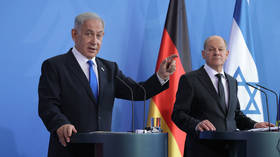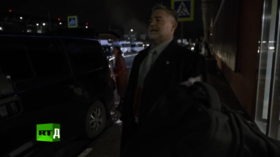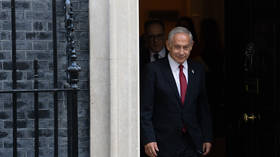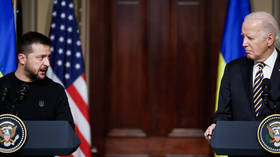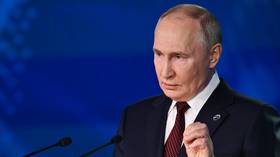‘Putin-Trump ceasefire in Syria may hold if US becomes pragmatic & makes allies comply’
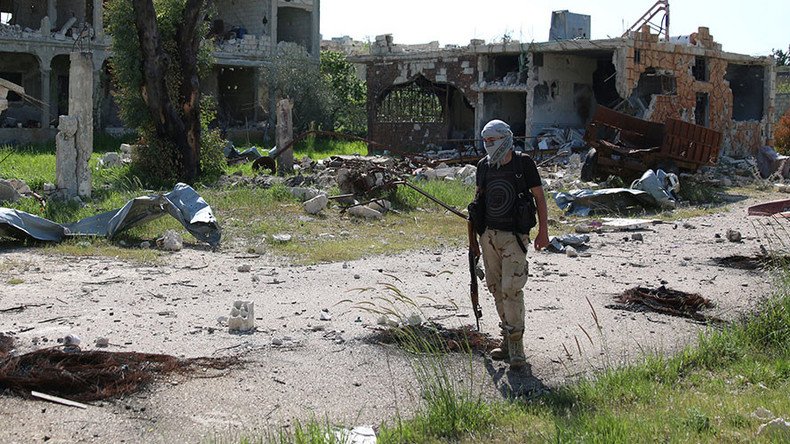
Recent military domination by the Syrian government ensures that the opposition is less likely to break the ceasefire, negotiated by Vladimir Putin and Donald Trump at the G20 in Hamburg. But the peace will be partial, and open to disruption by outside forces, regional experts tell RT.
'Russia is trying to prove the US can get something out of cooperating with it'
Jamal Wakeem, Professor of International Relations, Lebanese University in Beirut
RT: How influential can any such truce be, without directly involving forces on the ground directly? With still no agreement between Syria's government and the armed opposition in talks in Kazakhstan, how can there realistically be any guarantees for this new deal?
Jamal Wakeem: It should be noted first that this ceasefire was first declared a few days ago by the Syrian army itself after the great advance it achieved in southern Syria and also in eastern Syria. This put the Jordanians and Israelis in front of a fait accompli, whereas the Syrian army and its supporters mainly Hezbollah and Iranian fighters got close to the demilitarized zone in Golan Heights, which would present a threat for security from an Israeli point of view.
Later on, during the summit the Russians, in a concerted effort with the Syrians, presented this as a trophy to the American president to prove to him and to prove to his opponents that the US could get something out of cooperating with Russia. That is why I believe that the Russians and the Americans were able to get to this agreement and to establish demilitarized zone in Southern Syria and to establish a ceasefire.
#Ceasefire deal brokered by Russia & US enters into force in southwest #Syriahttps://t.co/FLud10g316pic.twitter.com/wOla4HWcSK
— RT (@RT_com) 9 July 2017
RT:With Washington still sending contradictory messages on the future of the Syrian government, how possible is any real progress?
JW: This could be a first step towards further talks to reach a peaceful resolution to a Syrian crisis, but this is still a first step and it should be tested – it is a long way ahead. So I believe that we wouldn’t be able to reach a final solution for the Syrian crisis before years from now – maybe one or two years at least. There are lots of obstacles especially from the American side; there is a lot of opposition to the American President Donald Trump. The day he was able to reach this agreement with Vladimir Putin – there were news leaked to the corporate media in the US of meetings between his son-in-law Jared Kushner and some of his aides with Russian diplomats. Criticism followed from Trump’s opponents.
There are a lot of obstacles. The Russians should also test the intentions of the Americans. Maybe Trump himself wouldn’t be willing to go into an agreement yet before trying to test all his cards maybe to get better deal with the Russians over Syria and to relate the Syrian crisis to other crises. Maybe he could get a package deal over other areas like Ukraine, Baghdad, or Iraq, and Yemen. I believe that we still have a long way ahead of us.
‘The US should be more pragmatic – it's in its own interest to end the Syrian conflict’
Seyed Mohammad Marandi, University of Tehran
RT:How significant is this agreement for the conflict, or for establishing closer ties between Russia and the US-led coalition?
Seyed Mohammad Marandi: It could be significant. This agreement from my understanding is the results of the Astana 4 and Astana 5 negotiations – those agreed upon the Astana 5 negotiations. The fact that the US and the Russians have also agreed upon this hopefully will make it more possible for it to be implemented. The Iranians, the Syrians, and the Russians believe that the more peace there is in Syria, the more pressure there will be on the extremists to end the war, because ordinary people will see their lives move back to some sort of normality. And that is not a good thing for extremists. Of course this ceasefire does not include, as we all know Al-Qaeda, Al-Nusra Front and ISIS. But other than that, the other groups have an opportunity now to help bring things a bit closer to normality.
US & Russia agree ceasefire in southwest Syria ‒ Lavrov https://t.co/vM5KEFklm1pic.twitter.com/SqoZbuTq1B
— RT (@RT_com) 8 July 2017
RT: Previously, all sides repeatedly accused each other of violating the ceasefires. Can this one hold?
SM: Yes, if we look back, we all recall that the US and the Russians created two ceasefires before. On both occasions the US allowed its extremist allies to take advantage of it. In the second ceasefire, we saw that the US went in, bombed Syrian government positions by mistake. Almost a 100 people were killed and the airstrikes were carried out over and over an hour, and almost immediately ISIS attacked the government positions as if they already prepared for those airstrikes. We have seen in the past the US use the ceasefires to the advantage of the extremists, but things are beginning to change. The Syrian government has made huge gains across the board; the extremists are on the back foot. Also in Iraq we see that the Iraqi central government along with the armed forces and the popular mobilization forces have made huge gains as well. The Syrian government and the Iraqi government – their forces have met on the border. These are things that we haven’t seen for the last four, five years. So the situation has changed.
RT: Do you agree with Vladimir Putin's assessment that the US position in Syria has become more pragmatic compared to the previous administrations?
SMM: We hope so. It should be more pragmatic, because the US has lost a lot of ground. The extremists – al-Qaeda and their allies – have lost battle after battle. ISIS, which was being supported by Saudi Arabia, by Qatar, and by other countries bordering the country – they too are now failing. So the Syrian government is much stronger today than it was in the past. It is in the interest of the US to change its policy. Now that we see that Saudi Arabia – its position has weakened so much, because of its war in Yemen, against the Yemeni people. It is the crisis between Saudi Arabia and Qatar now. And of the problems that Turkey is facing at home – these have weakened the American position. The Israelis of course want to continue the civil war, but the tide has turned. If the US plays it correctly it’s in their interest to bring this to an end.
‘Russia and Syria present a united front, but can and will the US get its allies to comply?’
Abdo Haddad, Syrian journalist and peace activist
RT: How easy will it be to monitor and maintain the ceasefire?
Abdo Haddad: If you look at the agreement there are two sides: from one side you have the Russians and subsequently the Syrians in total harmony and agreement. That showed through many occasions cases of restraint, cases of control, not answering the intimidations and breaking of other sides. And from the other side of the agreement you see the US and its allies. There lies the problem, there lies the uncertainly of compliance. It depends if the USA are serious about their foreign affairs policy and agenda, and are serious towards respecting their agreements, respecting their words, respecting the international laws and regulations, whether the UN or the UN Security Council, or bilateral like the Russian, American new agreement. The experience that we had in Syria is not very hopeful, but one should always hope for better, especially if it is a case of truce and saving lives.
‘It’s time to move forward in working constructively with Russia’ - Trump https://t.co/BWasoN687Dpic.twitter.com/SuaOYGHpA0
— RT America (@RT_America) 9 July 2017
RT: Why do you think these three zones were chosen for the ceasefire?
AH: Looking at this area geographically, it is an area attached directly to Jordan from one side, and to the Israelis from the other. The players in this area – from the government side you have a very clear player, which is the Syrian state and its allies. From the other side you have the armed groups – majorly Al-Nusra, which is practically al-Qaeda in Syria. This area that we’re pointing out has a very important backyard, which is the Syrian Desert that expends towards the Jordanian – Iraqi border. Hence the question: had all these interests and agenda meet together for a final solution; or, as President Putin described that another practical or pragmatic approach to the crisis in Syria or it is another time buying maneuver to regroup and replan?
The statements, views and opinions expressed in this column are solely those of the author and do not necessarily represent those of RT.




